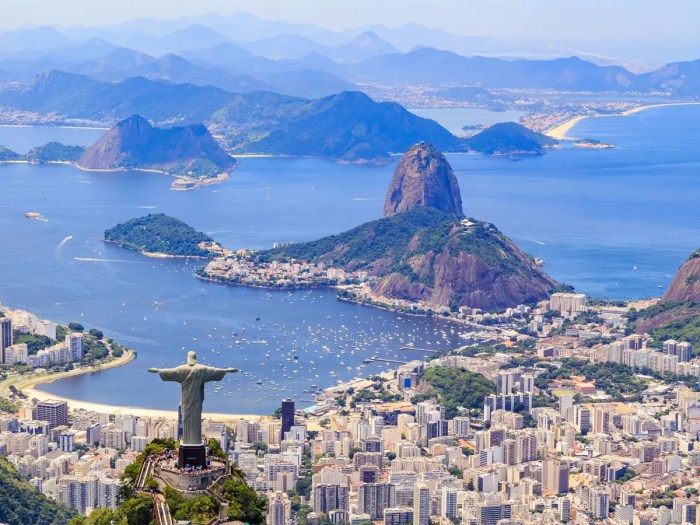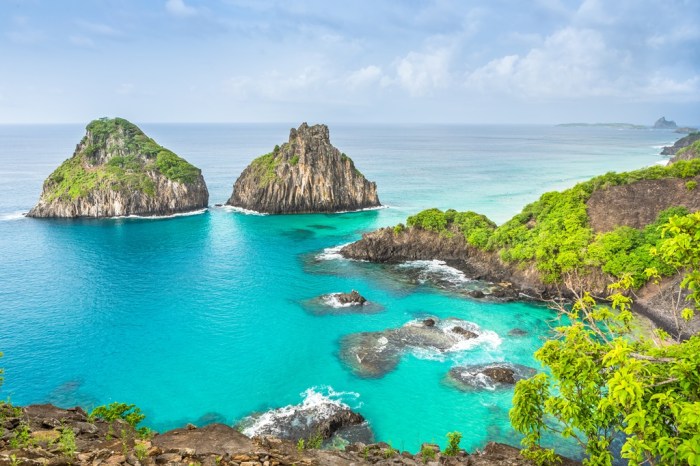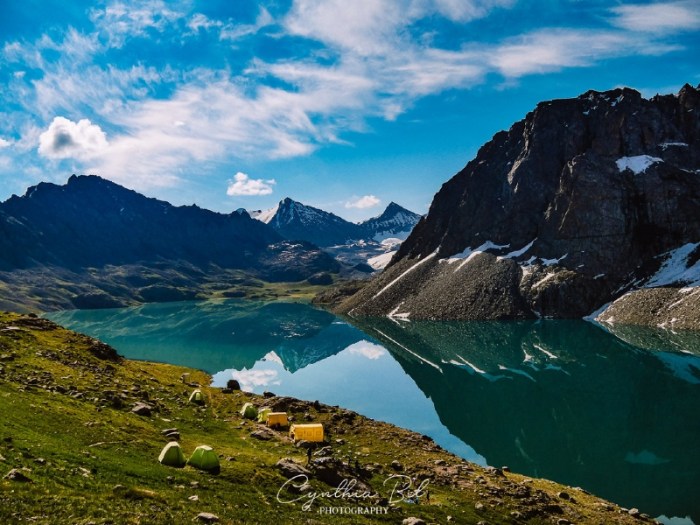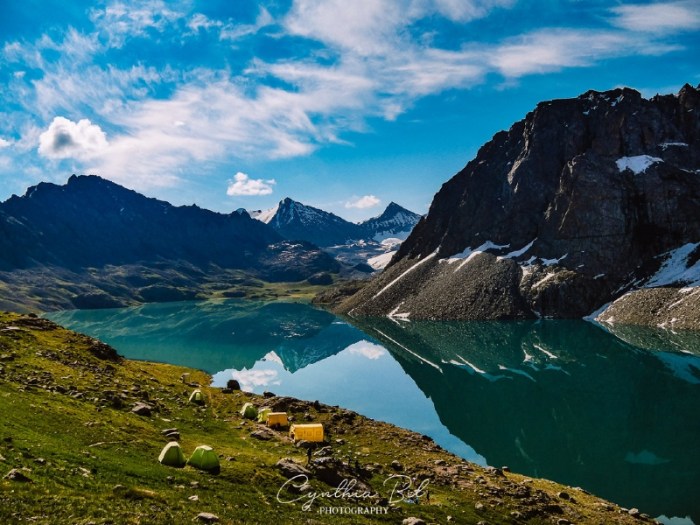Marie Antoinette pop culture icon. From lavish court life to modern-day interpretations, this 18th-century queen continues to fascinate and inspire. Her image, sculpted and reshaped across centuries, transcends historical context, becoming a potent symbol in literature, film, and popular culture. This exploration delves into the enduring legacy of Marie Antoinette, examining her historical role, evolving portrayals, and enduring impact on modern society.
This exploration examines the historical context of Marie Antoinette’s life within 18th-century French society. We’ll trace her journey through significant events, analyzing the perspectives surrounding her reign, and the political and social norms that shaped her existence. We’ll compare her experiences to those of other prominent figures of the era, highlighting her place in the tapestry of history. Furthermore, we will delve into her appearances in popular culture, tracing the evolution of her image across various mediums, from early literature to contemporary film and beyond.
Historical Context of Marie Antoinette: Marie Antoinette Pop Culture Icon
Marie Antoinette, the last Queen of France before the French Revolution, remains a captivating figure in history. Her life, though tragically short, continues to fascinate and inspire debate. More than just a royal figurehead, her story reflects the complex social and political landscape of 18th-century France, intertwining with the burgeoning tensions that would ultimately lead to revolution. This exploration delves into the historical context surrounding her life, examining her role, the major events of her reign, and the diverse perspectives on her character.The life of Marie Antoinette, born an Archduchess of Austria, was largely defined by her role as a pawn in dynastic politics.
Her marriage to Louis XVI, the future King of France, was a carefully orchestrated alliance between Austria and France. This union was intended to strengthen diplomatic ties, but it also thrust her into a world vastly different from her upbringing. Her initial struggles to adapt to French court life and societal norms contributed to the negative perceptions that would later emerge.
Marie Antoinette’s Life and Role in 18th-Century French Society
Marie Antoinette’s arrival in France marked a significant shift in her life. She was thrust into a world of elaborate court rituals, rigid social hierarchies, and immense expectations. Her Austrian heritage, coupled with her perceived aloofness and extravagance, quickly generated resentment among the French populace. The court of Versailles, with its opulence and perceived disconnect from the realities of the common people, became a focal point for criticism and contributed to the growing discontent that would later fuel the Revolution.
She was expected to produce an heir, a duty that weighed heavily on her and her marriage.
Major Historical Events Surrounding Her Reign
The period surrounding Marie Antoinette’s reign was fraught with significant historical events that directly impacted her life and the trajectory of France. The American Revolution, with its emphasis on liberty and self-governance, had a profound influence on French intellectuals and citizens, fostering ideas of revolution and challenging the existing social order. Economic hardship and widespread poverty, particularly among the lower classes, were critical factors that contributed to the growing unrest.
The extravagant spending of the French court, including the opulent lifestyle of Marie Antoinette, contrasted sharply with the suffering of the peasantry. These factors, along with the Enlightenment’s emphasis on reason and individual rights, created an environment ripe for revolution.
Different Perspectives on Marie Antoinette’s Character and Actions
The perception of Marie Antoinette was highly subjective and often influenced by political and social agendas. Some viewed her as a frivolous and extravagant figure, detached from the concerns of the common people. Others, particularly those sympathetic to the monarchy, saw her as a victim of circumstance, a pawn in political games. Contemporary accounts and historical analyses present conflicting images of her personality and actions.
This dichotomy of perspectives reveals the complex interplay between personal character and historical context in shaping public opinion.
Marie Antoinette, a figure perpetually etched in pop culture, often evokes images of extravagant lifestyles. Planning a road trip, inspired by the regal grandeur of her era, can be a great way to experience the world. Check out some fantastic trip ideas and road trips, deemed the most beautiful drives in the world according to trip ideas road trips most beautiful drives in the world according to , to get a feel for the journeys of a royal.
Her iconic status, even today, highlights the enduring power of history and the enduring appeal of the past.
Political Climate and Societal Norms
The political climate of 18th-century France was one of significant tension. The absolute monarchy, while powerful, faced growing challenges from Enlightenment thinkers and the burgeoning middle class. Societal norms, with their rigid class distinctions and extravagant court life, were increasingly viewed as outdated and unjust by many. These norms, which contributed to the perception of Marie Antoinette’s perceived frivolity, also served as a backdrop for the revolution that was brewing.
Comparison with Other Prominent Figures
Marie Antoinette’s experiences can be compared to those of other prominent figures of the era. For example, the struggles of other members of the French aristocracy, faced with economic pressures and political anxieties, mirrored some of the challenges that Marie Antoinette faced. However, her unique position as queen and the specific scrutiny she faced made her a target of public criticism in a way that others were not.
The different trajectories of these figures offer a broader understanding of the historical context.
Key Events in Marie Antoinette’s Life
| Date | Event | Location | Significance |
|---|---|---|---|
| 1755 | Born in Vienna, Austria | Vienna | Born into a royal family and a future queen. |
| 1770 | Married Louis XVI of France | Versailles | A political alliance between Austria and France. |
| 1774 | Became Queen of France | Versailles | Beginning of her reign and public life. |
| 1789 | French Revolution begins | Paris | Marked a turning point in French history and her life. |
| 1793 | Executed during the French Revolution | Paris | End of her life and reign. |
Marie Antoinette in Popular Culture

Marie Antoinette, the ill-fated queen of France, continues to fascinate and captivate audiences centuries after her death. Beyond her historical significance, her image has been profoundly shaped by popular culture, taking on various interpretations and symbolic meanings across different mediums. This exploration delves into the evolution of her portrayal, from early appearances to modern representations, highlighting the cultural narratives and artistic choices that have molded her enduring image.The enduring fascination with Marie Antoinette stems from a confluence of factors.
Her tragic fate, her perceived extravagance, and the tumultuous historical period in which she lived have all contributed to her captivating presence in popular culture. This enduring presence is reflected in her numerous appearances in literature, film, music, and other artistic mediums, each offering a unique perspective on the queen.
Earliest Appearances, Marie antoinette pop culture icon
Early portrayals of Marie Antoinette were often tied to the political and social climates of the time. In the immediate aftermath of the French Revolution, pamphlets and caricatures emerged, often depicting her in a negative light as a symbol of aristocratic excess and indifference to the plight of the common people. These early depictions, while not always accurate historically, laid the groundwork for future portrayals.
Evolution of Portrayal Across Media
The portrayal of Marie Antoinette has evolved significantly across various mediums. Early literary works often focused on sensationalizing her life, while later films and plays explored her personality and motivations in greater depth. Music, from operas to modern pop songs, has also incorporated her image, sometimes focusing on her beauty and romanticism, and sometimes on her perceived flaws and tragic fate.
Depictions Across Historical Periods
The image of Marie Antoinette has undergone a transformation throughout different historical periods. Early depictions were often highly politicized, reflecting the prevailing social and political views of the time. As the years progressed, there was a greater attempt to understand her motivations and character beyond the simplified stereotypes.
Cultural Narratives and Artistic Interpretations
Cultural narratives and artistic interpretations have played a crucial role in shaping Marie Antoinette’s image. The portrayal of her as a frivolous and extravagant queen has often been used to reflect societal anxieties about class divisions and the dangers of unchecked power. Conversely, artistic interpretations have also emphasized her resilience, intelligence, and human frailty.
Table of Popular Culture Portrayals
| Medium | Year | Description of Portrayal | Cultural Impact |
|---|---|---|---|
| Literature | 1789 | Pamphlets and caricatures portray her as a symbol of aristocratic excess. | Established early negative image, fueled by revolution’s anxieties. |
| Film | 1938 | “Marie Antoinette” (by W.S. Van Dyke) portrays her as a young, innocent woman caught in a complex political situation. | Humanized the queen, portraying her as a victim. |
| Film | 2006 | Sofia Coppola’s “Marie Antoinette” presents a more stylized and detached view of the queen, focusing on her social circles and court life. | Reflected modern cinematic sensibilities, but also drew criticism for perceived historical inaccuracies. |
| Music | Various | Various songs and operas featuring her, from classical to pop, often depict her beauty, tragic fate, or political role. | Perpetuated her image in popular culture through different genres. |
Symbolism Associated with Marie Antoinette
Marie Antoinette’s image is often associated with various symbols, reflecting the different interpretations and cultural narratives surrounding her. These symbols range from the extravagance of the French aristocracy to the tragedy of a fallen queen. For example, her lavish lifestyle has become a symbol of excess, while her execution symbolizes the brutality of revolution. Her image is often used to evoke discussion about social class, power dynamics, and the complexities of historical figures.
Modern Interpretations of Marie Antoinette

Marie Antoinette, a figure shrouded in both historical intrigue and popular imagination, continues to captivate modern audiences. From cinematic portrayals to literary explorations, contemporary interpretations delve into the complexities of her character, challenging traditional narratives and offering fresh perspectives on her life and legacy. Her enduring presence in popular culture reflects a desire to understand the human drama behind the historical events, and how power, privilege, and societal pressures shaped her destiny.Modern portrayals of Marie Antoinette often move beyond the simplistic caricature of a frivolous queen, instead exploring the complexities of her personality and the pressures she faced.
They delve into her motivations, relationships, and the social and political context of her time, creating a more nuanced and sympathetic understanding of the woman behind the historical narrative. This shift in perspective allows for a more human and relatable portrayal, acknowledging the psychological and emotional factors that influenced her decisions and actions.
Marie Antoinette, a figure often portrayed in pop culture, continues to fascinate. While I was researching her portrayal, I stumbled upon news about the Monterey Beach Hotel reopening in Monterey, California, the Monterey Beach Hotel reopens Monterey California. It’s fascinating how historical figures like her continue to resonate in modern times, especially with such a beautiful location like the newly reopened hotel.
Contemporary Media Representations
Modern media, including films, television shows, and books, frequently revisit Marie Antoinette’s story. These portrayals range from historical dramas meticulously recreating the period to more fictionalized accounts that emphasize her psychological struggles and personal relationships. The evolution of historical accuracy and fictional license in these representations allows for a deeper exploration of her character and motivations, revealing a woman caught between her personal desires and the demands of a demanding court and political climate.
Marie Antoinette, a figure perpetually in the spotlight of pop culture, often gets portrayed in a way that’s more myth than reality. Thinking about visiting the historical sites connected to her, like the Palace of Versailles, and planning your trip to Jordan, you’ll need to be aware of the visa requirements. Knowing these details is crucial for a smooth journey, and finding out about visa requirements for Jordan beforehand is key.
Her enduring presence in popular culture is a testament to the enduring fascination with royalty and the dramatic events of the past.
These interpretations often highlight the human cost of power and privilege, exploring the themes of isolation, ambition, and the consequences of societal expectations.
Facets of Personality in Modern Portrayals
Modern interpretations often depict Marie Antoinette as more than just a symbol of extravagance. Portrayals explore her intellectual curiosity, her artistic sensibilities, and her emotional vulnerabilities. Her relationships with her family, particularly her husband Louis XVI, are often examined in detail, highlighting the complexities of their marriage and the difficulties they faced in navigating courtly politics and personal expectations.
These portrayals also touch upon her personal struggles with social pressures, the burden of expectations, and her efforts to assert her own identity in a demanding world.
Recurring Themes and Motifs
Several recurring themes emerge in modern interpretations of Marie Antoinette. The theme of isolation and the difficulties of navigating a demanding court life is frequently emphasized, reflecting the struggles of an individual caught in a web of social and political pressures. The clash between personal desires and societal expectations is another prominent theme, as is the complex relationship between power, privilege, and responsibility.
These themes often intertwine with the concept of the “othered” figure, highlighting how societal perceptions and judgments can shape an individual’s fate and image.
Examples of Modern Artistic Expressions
Numerous films, television shows, and books have featured Marie Antoinette in recent years. These include Sofia Coppola’s “Marie Antoinette” (2006), which offers a unique and sometimes controversial interpretation of the historical figure. Other modern portrayals explore her life through different lenses, offering fresh insights and perspectives on her character. These artistic expressions provide a platform for contemporary audiences to engage with Marie Antoinette’s story and to interpret her actions within the context of their own time.
Contemporary Interpretations of Her Role in History
Modern interpretations often challenge the traditional view of Marie Antoinette as a frivolous and irresponsible queen. They emphasize her intelligence, her social awareness, and her efforts to navigate the complex political landscape of 18th-century France. These interpretations often explore the ways in which Marie Antoinette was shaped by the circumstances of her life, and how her choices were influenced by the pressures of courtly politics and societal expectations.
These new perspectives often highlight the limitations and constraints faced by women in positions of power during that era.
Recent Books, Films, or TV Shows
- Sofia Coppola’s “Marie Antoinette” (2006): A visually stunning film that offers a unique and sometimes controversial perspective on the queen, exploring her personal struggles and the societal pressures she faced.
- Various historical fiction novels: Several recent books explore Marie Antoinette’s life through different narrative lenses, offering readers a range of perspectives on her character and motivations.
- Recent documentaries and historical dramas: These productions offer insights into Marie Antoinette’s life, often focusing on her relationships and experiences, providing more nuanced portraits of the queen.
Marie Antoinette as a Pop Culture Icon
Marie Antoinette, the ill-fated queen of France, continues to fascinate and intrigue audiences centuries after her execution. Her image, often romanticized or demonized, has transcended historical accuracy, solidifying her as a powerful pop culture icon. This enduring presence in modern media is rooted in her dramatic life, her association with the French Revolution, and the inherent human fascination with royalty and tragedy.Beyond historical accounts, Marie Antoinette’s image has been reshaped and reinterpreted through countless artistic and media portrayals.
These portrayals, ranging from sympathetic portrayals to outright villainizations, have shaped our collective understanding of her and contributed to her lasting impact on popular culture. Her influence is evident in fashion, design, and advertising, demonstrating her enduring cultural relevance.
Enduring Presence in Pop Culture
Marie Antoinette’s captivating story, coupled with her association with lavish court life and the tumultuous events of the French Revolution, fuels her enduring presence in pop culture. Her image, often detached from historical accuracy, appeals to a broad audience, tapping into universal themes of power, sacrifice, and the complexities of human nature. This enduring fascination extends beyond historical contexts, highlighting the timeless appeal of her narrative.
Key Elements Contributing to Iconic Status
Several key elements contribute to Marie Antoinette’s iconic status. Her perceived extravagance and perceived aloofness, often exaggerated in popular depictions, provide a compelling contrast to the hardships of the common people. The dramatic backdrop of the French Revolution further elevates her to a symbolic figure, often representing the clash between aristocracy and revolution. Moreover, her tragic fate and the enduring fascination with royalty add another layer of complexity to her iconic appeal.
Impact on Fashion, Design, and Cultural Trends
Marie Antoinette’s style, often depicted as opulent and extravagant, has had a significant impact on fashion and design. Her use of elaborate gowns, hairstyles, and accessories has inspired countless interpretations and reinterpretations in modern fashion. Designers frequently draw inspiration from her aesthetic, creating modern pieces that echo her style, particularly in high-fashion and luxury goods. This influence transcends mere aesthetics; it reflects a broader cultural fascination with historical fashion and the symbolism it carries.
Resonance with Modern Audiences
Marie Antoinette’s persona continues to resonate with modern audiences because of the timeless themes of power, sacrifice, and the struggle between individual desire and societal expectations. Her image, often viewed through the lens of popular culture, resonates with contemporary audiences who can relate to these complex themes. Her story continues to spark discussions about social inequality, the excesses of the wealthy, and the consequences of political upheaval.
Use in Modern Advertising Campaigns
Marie Antoinette’s image has been frequently used in modern advertising campaigns, often to evoke a sense of luxury, extravagance, and timeless appeal. This imagery is frequently used to sell high-fashion items, cosmetics, and luxury goods, capitalizing on her iconic status to attract consumers. The subtle reinterpretation of her image in advertising reflects the enduring appeal of her story and the cultural cachet associated with her name.
Table: Marie Antoinette in Pop Culture
| Year | Medium | Key Elements | Impact on Pop Culture |
|---|---|---|---|
| 1950s | Film | Portrayed as a victim of circumstance, beautiful and naive | Established a sympathetic portrayal that endures in modern interpretations |
| 1980s | Music | Depicted as a symbol of excess and superficiality | Reinforced the dual perception of her character, both victim and villain |
| 2000s | Fashion | Reinterpreted as a style icon | Inspired a wave of modern interpretations of her aesthetic, creating a lasting influence on design and trends |
| 2010s-Present | Social Media | Image as a controversial figure, with both positive and negative connotations | Continued her presence in discussions on social media, further solidifying her as a pop culture icon with enduring appeal |
Marie Antoinette and Modern Society
Marie Antoinette, a figure often relegated to the realm of historical anecdotes, continues to resonate in modern society. Her image, meticulously crafted and re-imagined through various lenses of popular culture, is frequently employed to discuss contemporary issues, from class struggles to the challenges of female leadership. This examination delves into how the enduring image of Marie Antoinette serves as a potent symbol in our time, allowing us to analyze social structures, power dynamics, and gender roles through a historical lens.The enduring allure of Marie Antoinette stems from her potent representation of luxury, extravagance, and, paradoxically, vulnerability.
Her portrayal as a symbol of these traits, often juxtaposed with her tragic fate, has allowed her to remain a potent symbol for discussing modern issues surrounding wealth inequality, social status, and the consequences of power. This connection allows us to analyze contemporary societal trends and criticisms through a historical prism.
Relating Marie Antoinette’s Image to Contemporary Issues
The image of Marie Antoinette, often portrayed as detached from the struggles of the common people, readily lends itself to discussions about class inequality and social disconnect. Modern society often uses her image as a cautionary tale about the perils of unchecked privilege and the importance of empathy and understanding. Her purported indifference to the plight of the starving masses resonates with current debates about socioeconomic disparities.
Marie Antoinette as a Symbol of Luxury, Extravagance, and Power
Her association with lavish lifestyles and excessive spending fuels contemporary discussions about consumerism, materialism, and the impact of wealth on societal perceptions. The narrative surrounding her extravagant court life offers a window into societal pressures and the complexities of power dynamics, allowing us to analyze these dynamics in modern contexts.
Comparison with Other Pop Culture Icons
Comparing Marie Antoinette with other historical figures who have become pop culture icons, such as Cleopatra or Elizabeth I, reveals recurring themes in how we engage with the past. The ways in which these figures are depicted in media often reflect contemporary anxieties and aspirations. For instance, while Cleopatra is frequently associated with beauty and allure, Marie Antoinette is frequently linked with excess and indifference.
This difference highlights the evolution of societal values and the changing ways we interpret history through popular culture.
Examples of Marie Antoinette in Modern Societal Discussions
Marie Antoinette’s image appears in various contexts, from discussions about political corruption to critiques of societal elitism. In contemporary media, her image is often employed to critique issues of political apathy and the disconnect between the ruling class and the populace. This is evident in modern political cartoons, social media posts, and even historical fiction, demonstrating the enduring power of her image to spark dialogue.
Feminist Interpretations of Marie Antoinette
Interpreting Marie Antoinette through a feminist lens reveals the complexities of her image. While often depicted as a victim of societal constraints, a deeper look at her life reveals her agency and resilience. Modern feminist scholarship challenges the simplistic view of her as a frivolous queen and explores her attempts to navigate a male-dominated world, showcasing the nuanced experiences of women in historical power structures.
This exploration of her life offers valuable insights into the challenges faced by women in positions of power throughout history.
Ongoing Debate Surrounding Her Legacy
“Marie Antoinette remains a figure of enduring fascination and debate, a symbol of both extravagance and tragedy, of power and vulnerability. The interpretations of her legacy continue to evolve as we grapple with complex questions of historical representation, societal values, and the complexities of human nature.”
Ending Remarks
In conclusion, Marie Antoinette’s enduring presence in pop culture is a testament to her multifaceted persona. From historical figure to pop culture icon, her image continues to resonate with modern audiences, inspiring debate and interpretation. Her story, retold and reimagined across centuries, offers a compelling lens through which to examine changing cultural values and societal norms. This analysis highlights not just her historical context, but also the way her image has been manipulated and transformed in popular culture, illustrating how historical figures can become enduring symbols of power, luxury, and even rebellion.











![The 23 BEST Things to Do in Kyrgyzstan [2024 Update] Kyrgyzstan soviet union towns](https://whatvis.com/wp-content/uploads/2025/06/Things-to-do-in-Kyrgyzstan-1.jpg)

